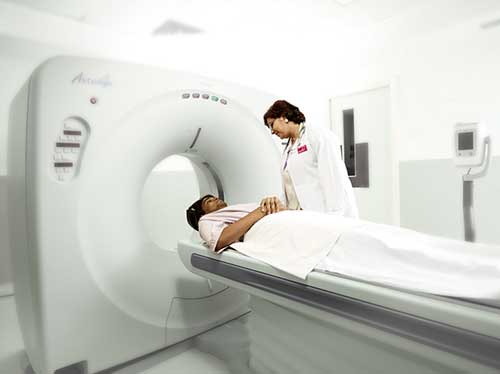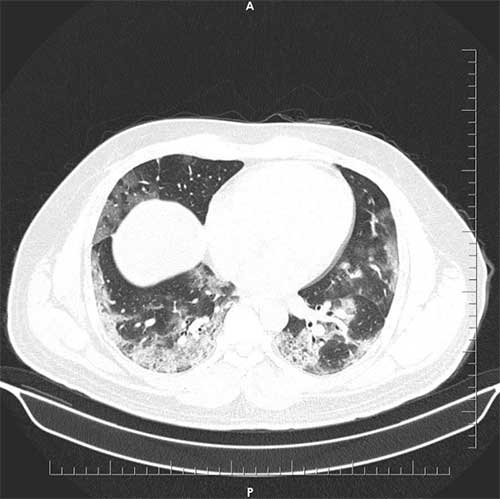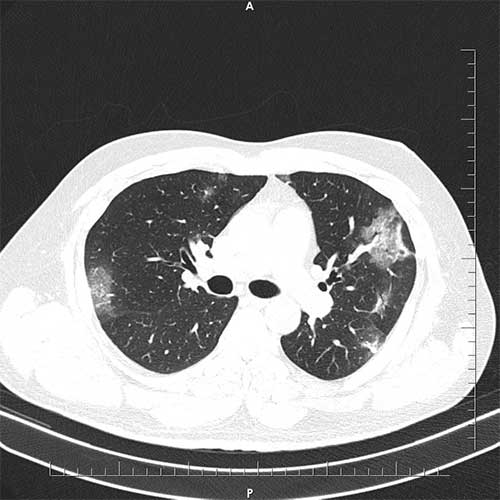COVID-19, as everyone is aware of by now, is the name of the highly contagious disease caused by the novel coronavirus. The majority of the people infected with this disease will either be asymptomatic or will show mild to moderate symptoms. This set of people will recover without needing any specialized treatment. It is the minority that we need to be concerned about. This includes people with diabetes, hypertension, cancer, chronic respiratory disease and the like.

As the world races to find a vaccine or a drug for COVID-19, people have to stay cautious and follow government guidelines which include home quarantining when flu symptoms are experienced and being strict about hand hygiene.
Early detection of the disease is indeed crucial to control the spread. A decreased lymphocyte count along with an increased CRP level are indications of the disease. The confirmatory test for COVID-19 remains the RT-PCR test. Unfortunately, the RT-PCR test is not without its limitations which include:
- Decreased availability of testing kits
- The long duration taken for results
These drawbacks of the RT-PCR test have led to doctors considering the use of CT-chest for diagnosing COVID-19.
According to the Fleischner Society statement on the usage of CT-chest for diagnosing patients with COVID-19, the following points are of importance:
- For patients with mild COVID-19 symptoms, CT-chest is not recommended unless they show signs of deterioration.
- Patients with deteriorating respiratory status, however, are advised CT-chest.
- CT-chest is considered useful when resources are limited due to a spurt in cases and medical triage of patients with moderate to severe symptoms is needed.
However, performing CT-chest is not without its set of attendant risks.
- Already limited resources like PPE are exhausted sooner.
- The probability of transmission of COVID-19 from a positive patient to the doctors and other staff is more as they come into close contact during the procedure.
- The patient is exposed to ionizing radiation.
It is to be noted that for patients suffering from typical COVID-19 symptoms, in spite of a negative RT-PCR result, CT-chest is recommended. It is also to be kept in mind that the CT findings of COVID-19 do overlap with the findings of other viral pneumonias.


Axial CT-chest in lung window in two different COVID-19, RT-PCR positive patients reveal multifocal patchy areas of subpleural ground-glass opacities with areas of crazy paving.
This leads us to the crucial question of whether CT can be used as a screening tool for COVID-19.
The answer is that CT-chest is not sensitive enough for the diagnosis of COVID-19. Initially CT-chest was found useful while diagnosing severe cases of COVID-19. For mild cases, however, CT-chest is not considered definitive. Of more importance is the fact that a negative CT-chest report for a suspected COVID-19 patient cannot be relied upon when the disease is still in its manifestation stage.
In conclusion, we can say that CT-chest can be used for the following:
- The triage of patients when there are resource limitations.
- For finding out the severity level of COVID-19 patients.
- To diagnose highly suspected cases of COVID-19, whose RT-PCR test result is negative.
- To rule out other causes of infection.
Scientific confirmation for the usage of CT-chest in diagnosing an asymptomatic COVID-19 patient with no history of contact with a COVID positive patient is still to be found.

Dr. Ramya Kamaraj, M.D.(Radio Diagnosis)
Radiologist,
Kauvery Hospital, Chennai

